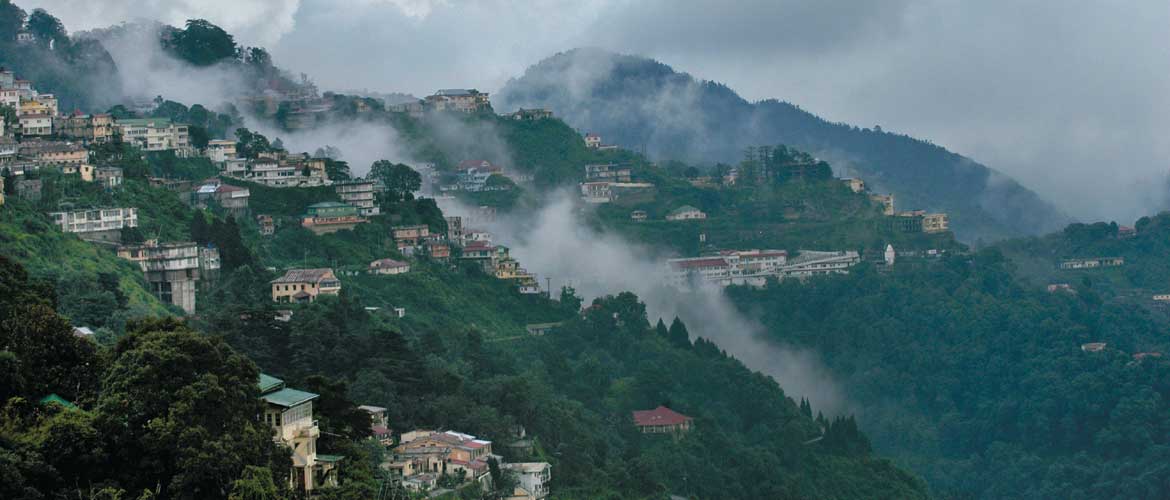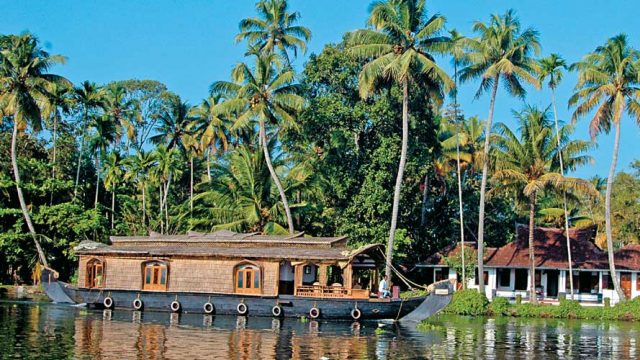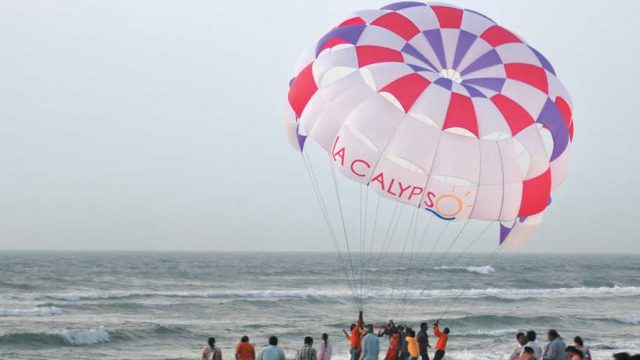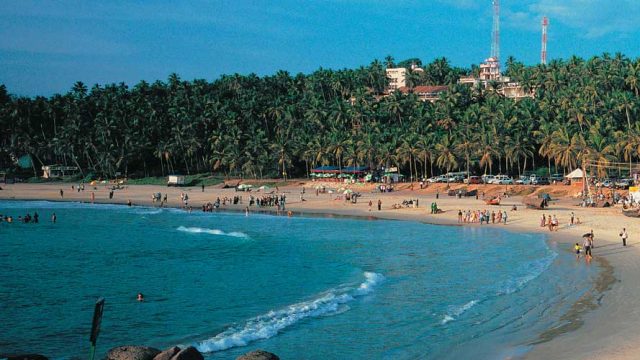If Mussoorie were to have a catch-phrase, ‘a home away from home’ would seem quite
Mussoorie was originally chosen by the British as a sanatorium, with the construction of the first European house dating back to the 1820s by Captain Young. Its landscape is thus dotted with prominent, grand, heritage structures of Colonial descent.

THINGS TO SEE AND DO
Mall Road
The aforementioned carnival pretty much defines Mall Road. You start from the Library Chowk, which marks the beginning of Mall Road. With a public library established in 1843, just at the beginning of the thoroughfare and an ornate gazebo called Band Stand (built in 1850, it was the venue for jazz artistes and military bands during the Raj era) set on the corner for shoppers and trekkers, the road zigzags its way until the Tehri Road begins. It’s a long road, which overlaps with areas such as Camel’s Back, Landour or Kulri Bazaar, and is the most comfortable walk-through as compared to the steep slopes of a quainter Mussoorie a few kilometres away. There are endless shops selling clothes, utility items, candles, Tibetan teapots and wickerwork among others; gaming parlours keep kids entertained and photographers parade around with local costumes for you to pose in. Kulri Bazaar falls in the fringes of Mall Road. Once done with the commercial attractions, enter the premises of Central Methodist Church, dating from 1885, a stunning building in grey stone and white, adorned with arched doorways and angular roofs. Then you can take the ropeway to Gun Hill, the second highest peak in Mussoorie, instead of walking the 2km stretch up there.
Gun Hill
A strategic location during Colonial times, from where a cannon was once fired at noon everyday, Gun Hill boasts a great view of Dehradun and its surrounding ranges.

Camel’s Back Road
Named after the hump-shaped rock formations, this road spreads out in an even, serpentine concrete path, twisting and turning alongside lush forests. The 3-km walk offers an uninterrupted quietude that one can usually only dream of. Horse rides and rickshaw services are available at the beginning of the route, both excellent options.
Landour
Landour is characterised by a gradual waning of Mall Road’s joie de vivre and exemplifies the oft-heard aphorism, ‘quiet of the hills’. The only stalls belong to vegetable and fruit vendors, along with an odd antique store or two, shops selling walking canes and shoemakers selling bespoke footwear. A spacious chowk, with the landmark Clock Tower Café towards the right, hints that there used to be a Clock Tower in Landour.
Landour has been a military cantonment since 1827 and was a health resort for wounded soldiers who were looked after by nurses, thus giving the main Landour cantonment its name, Sisters’ Bazaar. Cosy houses appear cuddled up against the backdrop of dense pines and moss-laden cemented railings as you stroll towards Sisters’ Bazaar.
Lal Tibba
The view of the postcard-perfect snow-capped peaks and the evanescent misty horizon will not fail to enchant. A lighthouse tower offers a telescope to get a closer look of the Himalayas, Banderpunch, Badrinath and Kedarnath. A word of advice: with monsoons come the leeches, so be covered and prepared if you can’t avoid the season.
Hathipaon: Cloud End and Park Estate
Hathipaon is the hidden treasure of Mussoorie. Hathipaon is known for mainly two attractions: Cloud End and the Park Estate. Marking the end of Hathipaon, Cloud End is enveloped by woods and has several trekking trails. More significantly though, there is a fascinating in-house museum, which comprises memorabilia such as paintings, crockery and books, among other artefacts. Further up is Benog Wildlife Sanctuary, a part of Rajaji National Park, which offers a chance to spot rare Himalayan birds, such as the Red Billed Blue Magpie or the near-extinct Mountain Quail, which reportedly inhabit the area.
Shopping
Mussoorie has a host of shopping options for keen buyers. Connected by the serpentine Mall Road, which is the busiest shopping area, you can make your way to Kurli Bazaar and Landour Bazaar to find the usual branded stores and tiny shops selling trinkets and knick-knacks. Owing to its British legacy, the various antique shops become an interesting stop for those who treasure postcards, furniture, advertisements on tinned cans and maps from that era. You will also find army memorabilia, books, silver jewellery as well as toys. Wooden items can be found at a bargain, and the famous handcrafted oak walking sticks make good gifts.
WHERE TO STAY AND EAT
The most impressive amongst the hotels in Mussorie is the Kasmanda Palace (Tel: 01345-2632424, 2633949; Tariff: ₹15,500–21,500 for 3D/ 2N). It offers a luxurious stay and has nice verandahs and heavily wooded estate. Fortune The Savoy (Tel: 2637000; Tariff: ₹14,500– 19,500), dating back to 1902, started the trend of luxury hotels at this hill station. Another heritage option is Padmini Niwas (Tel: 2631093, 2633123; Tariff: ₹4,600–16,000), located below the Mall Road. The Cloud End Forest Resort (Cell: 09634096861, 09412084105; Tariff: ₹7,000–9,000) near the Benog Sanctuary is a cosy retreat with stunning views. All hotels have restaurants attached.
FAST FACTS
When to go Mussoorie is at its best in March-June and October-early December. Winters are very cold. There may be snowfall in December-January
Tourist Office
GMVN, Tourist Info Counter, Near Cable Car, The Mall, Mussoorie, Tel: 0135-2632683, W gmvnl.com
STD code 0135
GETTING THERE
Air Nearest airport: Jolly Grant Airport, Dehradun (22km/ 45min). Taxi ₹1,500
Rail Nearest railhead: Dehradun (34km/ 1.5hrs) which is served by the Dehradun Shatabdi. Taxi (₹1,500–1,800) gets you to Mussoorie in 45mins. Contact Drona Travels (Tel: 0135-2653309)
Road It’s a 269km/ 7-hr drive from Delhi. Go via Roorkee, Chhutmalpur and Dehradun to Mussoorie Bus One non-AC bus leaves at 9.30pm (₹319) and an AC-bus at 10.30pm (₹568) from ISBT Kashmere Gate for Mussoorie (7hrs). There are also several Volvo services (₹683) to Dehradun starting from 5.00am–12.00am
Unmissable India
Mussoorie
Uttarakhand





